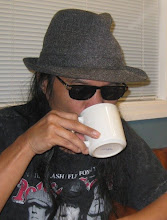RECOMMENDED. Music: “Late for the Sky.” / TV series: “Kung Fu.”
Music. “Late for the Sky,” 1974 album by Jackson Browne. Mostly, a true artist’s best work is done when at a younger age, on fastball pace, and crafted with less pressure. My best Jackson Browne LPs are 1976’s remarkably brooding “The Pretender” and this one, his third studio effort. And I am not alone: In 2020, the album was deemed "culturally, historically, or aesthetically significant" by the Library of Congress and selected for preservation in the National Recording Registry.
In "Before the Deluge," Mr Browne wrote one of his most forceful political indictments in the absence of bombastic metaphor: “Some of them were dreamers / And some of them were fools / Who were making plans and thinking of the future / With the energy of the innocent / They were gathering the tools / They would need to make their journey back to nature / While the sand slipped through the opening / And their hands reached for the golden ring / With their hearts they turned to each other's hearts for refuge / In the troubled years that came before the deluge.”
Jackson was still living in his childhood home, The Abbey San Encino, where he began writing the songs for his third album. Because of the high costs of recording his previous album, Asylum Records founder “Late for the Sky.” The album was completed in six weeks and at half the cost of a regulat studio cost at the time, $50,000. Numerous friends including Dan Fogelberg, Don Henley, and J. D. Souther contributed harmony vocals.
“Late for the Sky” is a kind of collection that you’d want to get stuck in your ears as you take a long road trip on a Greyhound. I did. The ethereal experience heals and it only happens once. 🎼🎹🎼
TV series. “Kung Fu,” 1972-1975 action-adventure martial arts Western drama, starring (the late) David Carradine as Kwai Chang Caine, a Shaolin monk who said only the good words. The popular line of my early youth: “Take the pebble from my hand, Grasshopper…” Do you still remember the good old days?
“Kung Fu” follows the adventures of Kwai Chang Caine, who travels through the American Old West, armed only with his spiritual training and his skill in martial arts, as he seeks Danny Caine, his half-brother. Many of the aphorisms used in the series are adapted from or derived directly from the Tao Te Ching, a book of ancient Taoist philosophy attributed to the sage Lao-tzu.
Backstory: Kwai Chang Caine is the orphaned son of an American man, Thomas Henry Caine, and a Chinese woman, Kwai Lin, born in mid-19th-century China. After his maternal grandfather's death he is accepted for training at a Shaolin Monastery, where he grows up to become a Shaolin priest and martial arts expert.
A tombstone dated 1874 in a Season 3 episode places the stories approximately between 1871 and 1875. That’d be half a century since the first Chinese people arrived in the United States around 1815. Subsequent immigrants that came from the 1820s up to the late 1840s were mainly men.
The other two interesting characters in the well-loved series are Kwai’s two Shaolin mentors Master Po (Keye Luke) and Master Kan (Philip Ahn). But what was interesting was Kwai’s style of martial arts called Shaolin Kung Fu or Shaolin Wushu, one of the oldest, largest, and most famous styles of wushu, or kung fu. Defensive, slow/fast and sure, this art is carried out via various fascinating styles such as White Crane, Dragon, Tiger, Snake, Mantis, and Eagle Claw.
A supposedly sequel series of “Kung Fu” came out years after. I watched an episode but I wasn’t drawn to it. The original was the real thing. 🎬🎭🎬



